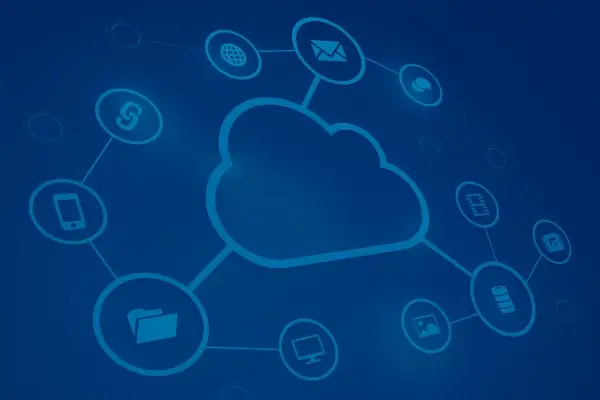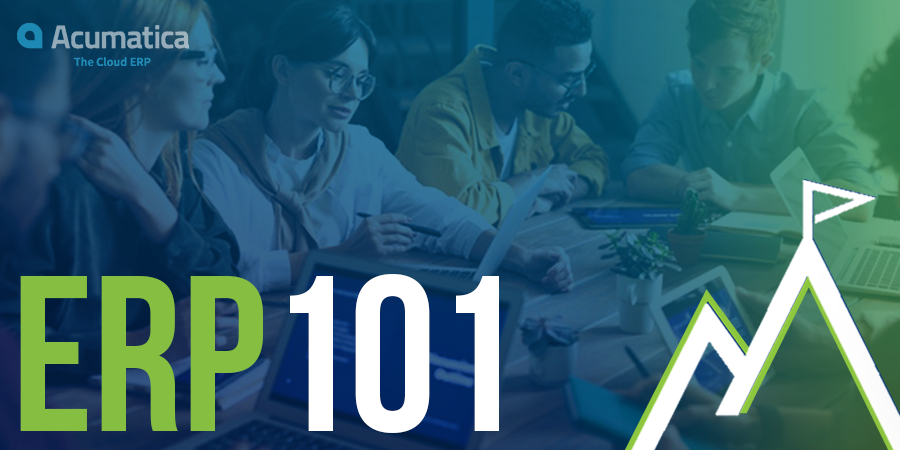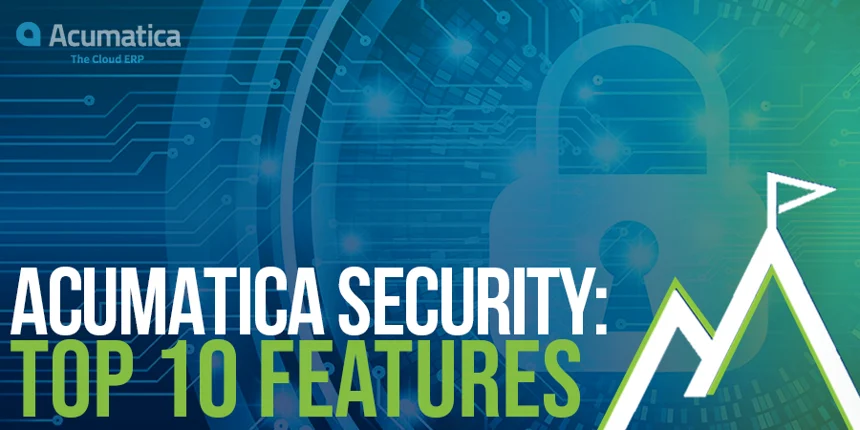5 min read
10 Signs Your Accounting ERP Software Is Holding You Back
The Milestone Team 4/27/20 4:37 PM

Table of Contents
Updated 9/23/25
Every growing company eventually asks the same question:
Is our accounting software still helping us—or is it slowing us down?
An ERP project is a serious investment of time and money. That’s why it’s critical to know when sticking with your current system actually costs more than making a change. The first step is understanding the warning signs that your current accounting ERP software is no longer a fit.
Here are ten key reasons companies decide it’s time to upgrade and move to a new modern Accounting ERP Software, along with deeper insight into what each means for your business.
1. Your System Doesn’t Have the Features You Need
Business requirements rarely stay the same. As you expand into new services, add staff, or serve more customers, your accounting software has to keep up.
When it doesn’t, you may notice:
-
Missing capabilities. Things like project budgets, automated expense tracking, or detailed job costing simply aren’t available.
-
Workarounds everywhere. Teams rely on extra spreadsheets, email chains, or third-party apps just to handle daily tasks.
-
Customer impact. Delays, mistakes, or limited reporting can ripple out to clients and vendors, hurting satisfaction and relationships.
The cost of missing features is more than inconvenience. Every manual step adds time and increases the chance of human error. Over months and years, that can mean thousands of wasted hours and inaccurate financials.
A modern accounting ERP system includes built-in tools—project tracking, expense management, role-based dashboards—that allow finance and operations to work from one accurate source of truth. With the right foundation, your team spends less time patching and more time improving the business.
2. Growth is Harder Than it Should Be
A growing business needs technology that grows along with it. Many legacy or entry-level accounting and ERP systems do the opposite by creating barriers such as:
-
Per-user fees. Adding staff means rising license costs, making you think twice about who gets access.
-
Complex expansions. Opening a new branch, warehouse, or entity requires significant IT effort and extended downtime.
-
Performance ceilings. As transaction volumes increase, reports run slower and databases need constant maintenance.
These issues turn growth—a positive thing—into a technical challenge.
You may hesitate to hire or add locations simply because the software cost and complexity are too high.
A modern accounting ERP solution is designed to scale. You can add users without worrying about license limits, spin up new locations without long projects, and handle higher transaction volumes without slowing down. Growth should be exciting, not a budgeting and IT headache.
3. Technology is Showing it's Age
Software doesn’t age gracefully. Over time you may notice:
-
Slower performance and more crashes. Older databases can’t manage years of accumulated data without frequent archiving, which complicates reporting.
-
Compatibility conflicts. New Windows versions or antivirus programs can break key processes, causing errors or data loss.
-
Rising support costs. Fixing issues requires specialized knowledge that is expensive and harder to find as the product gets older.
These aren’t small annoyances. One company, for example, saw payroll data repeatedly corrupted after a required antivirus update, forcing them to rebuild data and rely on outside support every month.
Modern cloud ERP avoids these pitfalls. Regular, automated updates keep the system current and secure. The database is built to grow with your business, and you don’t need to worry about hardware or operating system conflicts.
4. Different Systems Don’t Talk to Each Other
It’s common for departments to run separate software, HR on one system, sales on another, inventory in spreadsheets, and accounting on a standalone program. The result is data silos:
-
Each department maintains its own records and reports.
-
Data has to be entered multiple times, increasing the risk of errors.
-
Management wastes hours consolidating numbers, and decisions are based on outdated or incomplete information.
These silos aren’t just inconvenient. They hide problems like rising project costs or inventory shortages until it’s too late to correct them.
A modern, fully integrated ERP system connects every function—finance, HR, sales, inventory, and more—so everyone sees the same real-time data. This single source of truth supports faster decisions and better customer service.
5. Remote Work is a Struggle
Work is no longer tied to a single office. Employees need secure access to financials and operations whether they are:
-
Approving invoices from home.
-
Reviewing project costs on a job site.
-
Traveling and updating expenses on the road.
Legacy on-premise ERP systems often require costly VPNs, Citrix licenses, or remote desktop tools to make remote work possible. These solutions add IT complexity and potential security risks.
Cloud Accounting ERP software makes remote access simple. Employees log in through a secure web browser from any location, on any device. During the pandemic, companies running modern cloud ERP were able to transition entire teams to remote work overnight with minimal disruption—a clear advantage in today’s flexible work environment.
6. Your Team Wants Better Tools
Today’s workforce expects business software to be as intuitive as the apps on their phones. New generations of employees are now the largest segment in the workforce look for:
-
Always-on access from laptops, tablets, or phones.
-
Clean, user-friendly design that doesn’t require thick manuals.
-
Built-in collaboration features such as task management, push notifications, and in-app messaging.
Older systems, with clunky interfaces and rigid workflows, frustrate employees and make training harder.
Modern ERP offers guided workflows, embedded videos, and customizable help menus that let employees learn as they work. Role-based dashboards show each user what matters most to their job. This isn’t just about convenience—it directly improves productivity, job satisfaction, and retention.
7. IT Costs Keep Climbing
Maintaining an on-premise ERP and Accounting system can be a drain on budgets and staff time:
-
Servers need regular upgrades and replacements.
-
Security patches and operating system updates require constant attention.
-
Annual software maintenance fees add up year after year.
Whether you manage IT internally or outsource it, a big portion of your technology budget goes to simply keeping things running. That means less time and money for projects that actually drive growth.
A cloud Accounting ERP changes the equation. The vendor hosts and maintains the system, rolls out updates automatically, and provides built-in security. Instead of unpredictable capital expenses, you pay a predictable subscription and free your IT team to focus on innovation.
8. You’re Leaning on Excel for Critical Work
Excel is a great analysis tool, but it’s not an ERP system. If your team depends on spreadsheets to handle core financial processes, you risk:
-
Human error. A single wrong formula can throw off key financial reports.
-
Key-person dependency. When only one or two employees know how complex spreadsheets work, you’re vulnerable if they leave or are unavailable.
-
Slow, manual reporting. Exporting and manipulating data by hand delays financial closes and management reporting.
Other outdated manual processes—like saving PDFs on shared drives or routing paper check requests for approval—compound the problem.
Modern Accounting software includes built-in financial reporting, electronic approvals, and digital document storage. Month-end and year-end closes become faster and more accurate, and managers get real-time insights instead of waiting for spreadsheets.
9. Your Software Is Being Phased Out
Many accounting and ERP systems eventually reach the end of their life. Warning signs include:
-
Fewer updates and slower responses to support requests.
-
Vendor announcements of end-of-life dates.
-
Difficulty finding consultants who know the product.
If your system is heading for retirement, waiting until it fails can lead to unplanned downtime, lost data, and a rushed replacement.
Planning your migration early lets you control the schedule, protect your information, and train staff on the new system before the old one stops working.
10. Integrations Are a Constant Pain
Modern businesses need smooth connections to e-commerce platforms, CRM systems, payroll services, and other specialized apps. Legacy systems often make that hard:
-
Simple imports or exports require technical consultants.
-
Data transfers take hours and can fail without clear error messages.
-
When something breaks, it’s unclear which vendor is responsible.
These delays cost time, create errors, and make real-time decision-making impossible.
Modern cloud ERP uses open APIs and event-driven automation so systems communicate automatically in real time. Information moves without manual intervention, and maintenance is simpler and more predictable.
Moving Forward with Confidence
If several of these warning signs sound familiar, your current accounting system is probably holding your business back.
Upgrading to a modern, cloud-based Accounting ERP system delivers:
-
One connected platform for financials, projects, inventory, and operations.
-
Real-time visibility across every department.
-
Lower IT costs and easier integrations with the tools you already use.
-
Unlimited scalability so growth never means starting over.
By taking action now—on your own schedule—you can avoid emergencies, protect your data, and set your company up for long-term success.
It’s a proactive step that keeps your operations strong today and ready for whatever tomorrow brings.

The Benefits of Cloud ERP Software: Flexibility, Savings, and Security
Updated 9/1/25 Cloud ERP isn’t just another business tool—it’s the cornerstone of digital transformation. The phrase gets tossed around often, but...

ERP 101 : What is an ERP system?
ERP (Enterprise Resource Planning)—sometimes called business management software or even advanced accounting software—is the system that keeps modern...
